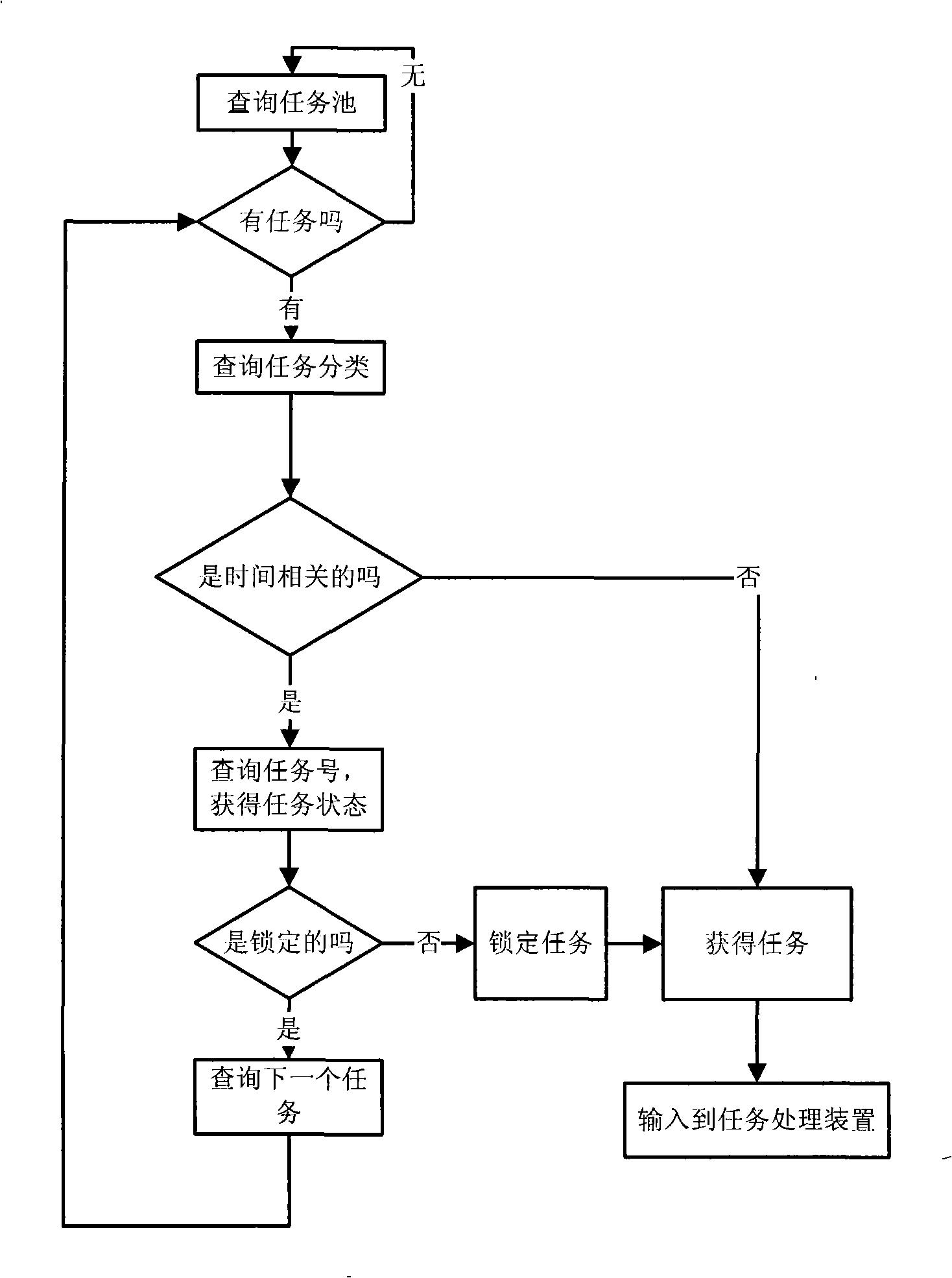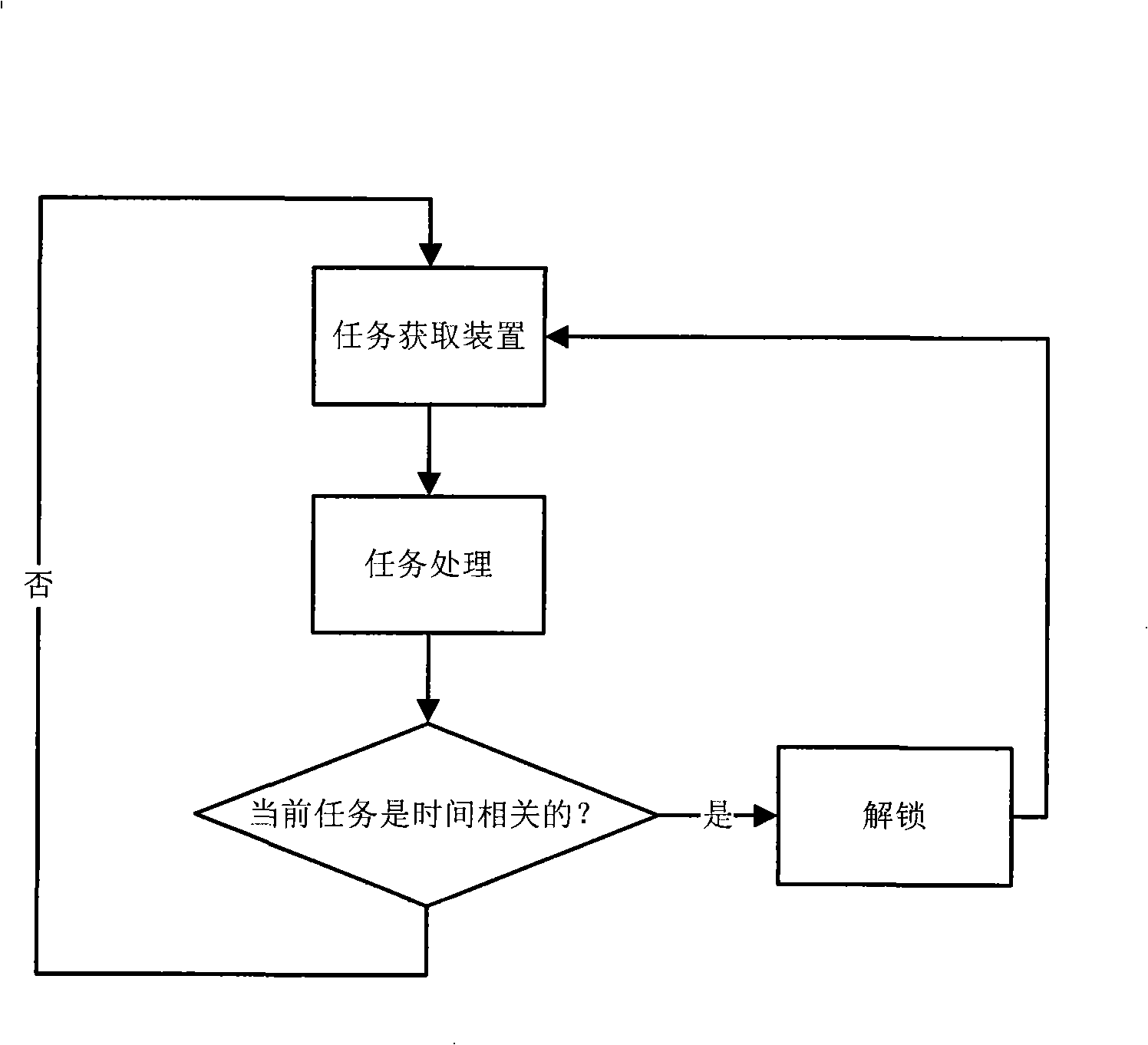Multi- nuclear DSP system self-adapting task scheduling method
A task scheduling and self-adaptive technology, applied in the direction of multi-program installation, program startup/switching, etc., can solve the problem of non-utilization, and achieve the effect of realizing load balancing and reducing reliability requirements.
- Summary
- Abstract
- Description
- Claims
- Application Information
AI Technical Summary
Problems solved by technology
Method used
Image
Examples
Embodiment 1
[0023] After the multi-core DSP system receives new tasks, it will input all tasks into the shared task pool. The tasks described are to process various multimedia, such as encoding and decoding audio and video, enhancing images, and Perform denoising processing, speech recognition, etc.
[0024] In this embodiment, a shared task pool is created in the shared memory of the multi-core DSP system, which is used to cache all tasks input from the outside world and can be accessed by all slave cores at the same time. The task pool is a one-way linked list of tasks sorted by time, and the way to add tasks to the task pool is to add entries to the end of the task list.
[0025] See attached figure 1 , which is the workflow diagram of the task pool in this embodiment. The task pool performs classification, numbering and status setting processing on the input new tasks.
[0026] Classification: Divide tasks into time-related and irrelevant categories. If the processing of the next t...
PUM
 Login to View More
Login to View More Abstract
Description
Claims
Application Information
 Login to View More
Login to View More - R&D
- Intellectual Property
- Life Sciences
- Materials
- Tech Scout
- Unparalleled Data Quality
- Higher Quality Content
- 60% Fewer Hallucinations
Browse by: Latest US Patents, China's latest patents, Technical Efficacy Thesaurus, Application Domain, Technology Topic, Popular Technical Reports.
© 2025 PatSnap. All rights reserved.Legal|Privacy policy|Modern Slavery Act Transparency Statement|Sitemap|About US| Contact US: help@patsnap.com



